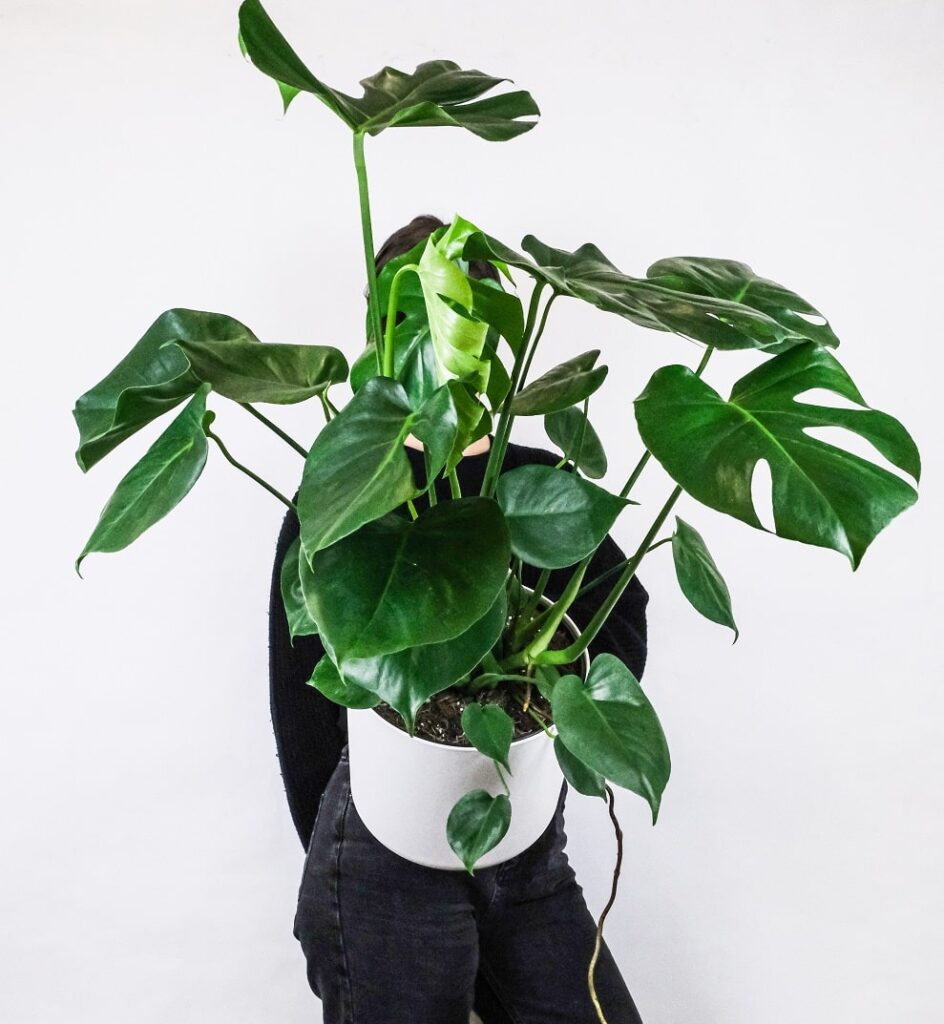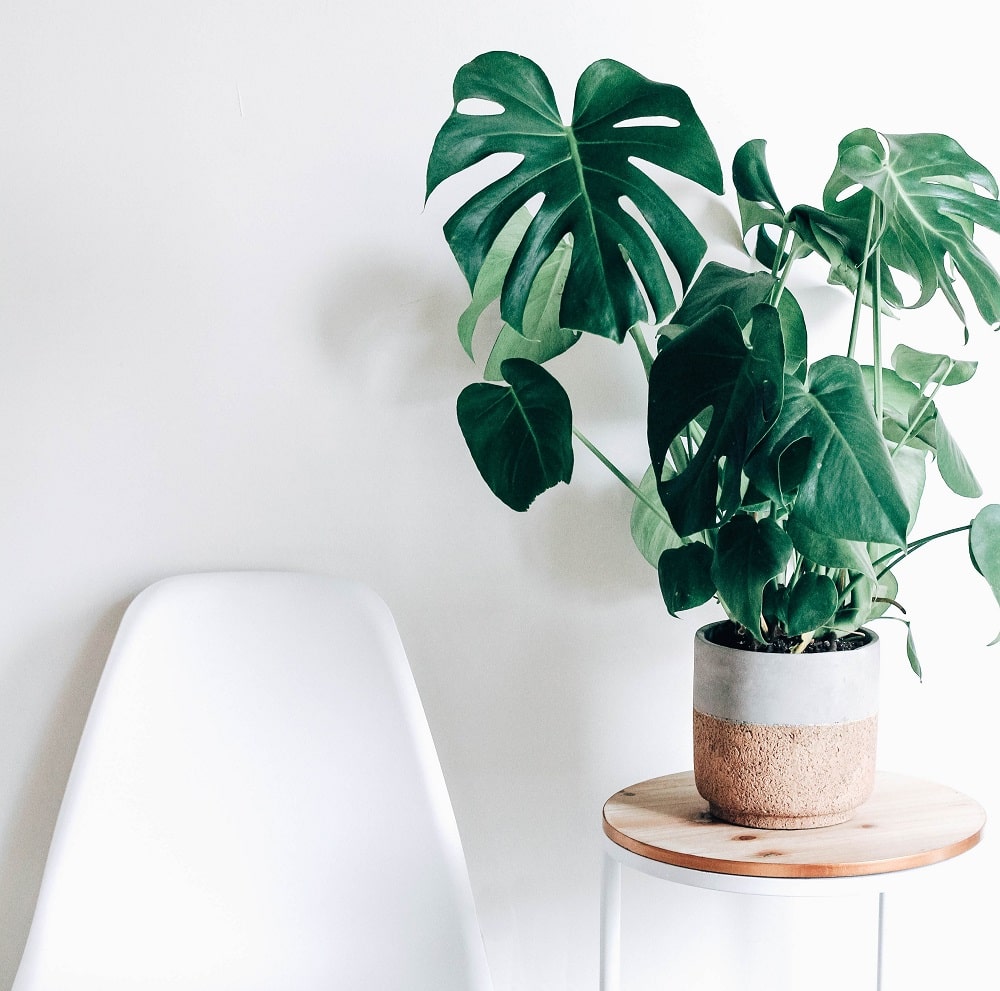I have been obsessed with growing houseplants in my entire life. Monstera plants happen to be my favorite houseplants due to their impressive leaves.
Monstera deliciosa (Swiss Cheese Plants) are so easy to maintain and grow. But these guys come with one or two disadvantages when neglected for an extended period.
You will find your monstera dying. There is no need to be too alarmed since the Swiss cheese plant can be revived with little tender care.
So, why is my monstera dying? The possible causes are underwatering, overwatering, direct sunlight exposure, improper fertilization, pests, diseases, and more.
The rule of thumb is to identify the underlying cause and resolve it. I recommend taking time to read through the monstera care guide to resolve the problems.
This article provides a detailed insight into the causes and techniques of saving a dying monstera plant at home. You will also get to learn how to save monstera deliciosa from root rot.
You May Also Read: Why is My Monstera Leaves Not Splitting?

Reasons Why Your Monstera Is Dying
You Can Also Read: How to Care for Monstera Adansonii
Low Humidity
Monstera plants thrive in a warm and humid environment. The condition allows the houseplant to experience better growth and health.
But maintaining a warm and humid condition at home can be challenging. The indoor growing condition dynamics result in humidity fluctuations.
Low humidity causes monstera stems to droop and leaves to become crispy. Failure to fix the problem on time, your monstera will wilt and die in the long run.
The best option is to mist the leaves several times a day to increase the humidity level around the houseplant. It can be done by installing a humidifier in the house.
Another excellent alternative is changing the location of the plant. It would be best to take the plant to the bathroom where humidity is always high.
Inappropriate Temperatures
The Swiss Cheese Vine plant loves a temperature range of 65-85oF. But the plant can still survive indoors when the temperature mimics their natural habitat.
If you place your monstera in a spot where the temperature is below 50oF, the plant is likely to suffer from temperature shock.
Low temperature causes stunted growth, foliage discoloration, and curling leaves. The houseplant is likely to die if it stays in an extremely cold environment for an extended period.
Prolong exposure of the monstera plant to high temperatures will result in leaf drooping, wilting, and eventually its death. But temperature plays an insignificant role in monstera survival at home.
Keep your houseplant away from both hot and cold drafts. It is the best way to save a dying monstera from inappropriate temperature.
Pest Infestations
Pests are among the leading cause of monstera death. Every plant owner needs to battle with this situation since it is inevitable.
Monstera plants are more vulnerable to spider mites, aphids, mealybugs, scales, gnats, and more insects. Handling pest infestation issue is super easy for every gardener.
Pests usually cause stunted growth, leaf blight, and holes in the leaves, white spots on the foliage, speckled leaves, and dropping leaves.
Monstera plants end up dying if the pest infestation issue is not fixed on time. These insects usually overwhelm the plant and cause more harm.
I recommend inspecting the plant more often to detect insect infestation symptoms early. Use neem oil spray to kill and control insect infestation at early stages.
You May Also Like: Why Are My Monstera Leaves Turning Yellow?
Root Rot Disease
A damp soil environment makes monstera plants susceptible to root rot. The condition occurs when the roots cannot breathe and absorb the required nutrients.
You will notice your houseplant wilting and decaying. The issue is common among those houseplants grown in improper drainage soil and is being overwatered.
Other signs of root rot are discolored leaves, stunted growth, mushy and slimy roots. Keep in mind that root rot is among the leading cause of a dying monstera.
The best option is to uproot the plant and snip the affected roots with sterilized scissors. Re-pot the houseplant to a new container with fresh potting mix.
Provide a proper growing condition to avoid root rot from happening again. Ensure the potting mix used has proper drainage to enhance root aeration.
Inappropriate Lighting Condition
Light is an essential component for any plant’s survival. It allows green plants to undertake their physiological activities more efficiently and effectively.
But monstera plants flourish under the canopy in their native habitat. It implies that the plant loves bright indirect sunlight to enhance its survival.
Direct exposure to sunlight usually causes sunburn, drooping, and brown leaves. If this condition persists for a longer period, the monstera will begin to wilt and die.
Extremely low light also causes some harm to the houseplant. Some of the common signs are leggy and thin stems.
I recommend placing the houseplant in a region that receives bright indirect sunlight. Add curtains to the window to prevent excess heat buildup around the plant.
Under-Watering Issue
Most houseplant owners are too busy. Some end up forgetting to water their plants for a couple of days or weeks. Limited water supply usually harms the plant’s vital tissues.
Under-watering is associated with leaves discoloration, curling, browning of edges and tips. If the condition persists for a couple of weeks, the plant will start to wilt and die.
Make routine soil moisture check to save your dying monstera plant from under-watering. Water the houseplant twice or thrice a month throughout the growing season.
Remember to reduce the frequency of watering the houseplant in winter to avoid overwatering issues. I recommend watering the plant once a month in winter due to monstera dormancy.
You May Also Enjoy: Why Are My Monstera Leaves Drooping?
Overwatering Problem
If you are looking to ruin your houseplant health and growth, consider overwatering. A damp growing environment makes monstera vulnerable to diseases, pests, and other related issues.
Overwatering occurs due to poor drainage soil. The condition restricts the roots from breathing freely and carrying out their vital functions.
You will notice signs such as monstera leaves dropping, yellowing, and browning at the tips. Monsteras will start dying if it stays in the damp condition for a couple of weeks.
The best option is to re-pot the houseplant. Use a container with drainage holes at the bottom and fresh potting mix. Have a healthy watering schedule for your houseplant.
Remember to water your houseplant twice or thrice in spring and summer. Limit the frequency of watering your indoor plant in winter due to monstera dormancy.
Over-Fertilization
Monstera plants are not heavy feeders. These houseplants require low-moderate feeding throughout the growing season.
Water-soluble fertilizer is the best option for monstera plants. The dilution helps to reduce the strength of chemicals in the fertilizer.
Applying fertilizer to the houseplant in winter is the reason behind wilting and its death. Winter is the period when the houseplant is dormant and cannot utilize the nutrients.
Excess fertilizer results in a buildup of toxic salt components around the roots. The excess salt inhibits the roots from carrying out vital physiological processes.
You will notice your monstera leaves turning brown and the stems bending. If the plant stays in the condition for a couple of days, it will begin to die.
The best solution is to flush the soil with distilled water to eliminate the salt. But this routine usually results in overwatering issues.
I recommend re-potting the houseplant to a fresh potting mix. Stick to feeding the plant twice a month during spring and summer.
You May Also Read: Difference between Monstera Deliciosa and Borsigiana
Frequently Asked Questions
Can I Save My Monstera from Dying?
You can save your monstera from dying, yes. But you need to be quick in identifying the cause of the problem and fixing it. It will be challenging to save the plant if the condition is severe.
How to Tell If Monstera Plant Is Dying?
Signs of a dying monstera plant are leaves turning yellow, brown, and drooping, brown spots on the leaves stem turning white, and leaves curling.
Why Is My Monstera Turning Yellow?
The possible causes are overwatering, low lighting conditions, old age, low humidity, and nutritional deficiencies. The rule of thumb is to identify the cause and fix it.
Why Is My Monstera Turning Brown?
Direct exposure to sunlight and low humidity are the main causes of monstera turning brown. Other causes are pest infestations, temperature stress, over-fertilization, and improper watering.
How Much Light Does Monstera Need?
Monstera plants thrive under bright indirect sunlight. But it can also tolerate low-medium lighting conditions. Therefore, consider exposing your houseplant to filtered sunlight for 3-4 hours a day.
Why Are My Monstera Leaves Droopy?
It is mainly due to the under-watering issue. Insufficient water supply usually damages plant leaf tissues and causes drooping. Consider a healthy watering schedule to avoid overwatering stresses.
You Can Also Read: Why Are Variegated Monstera So Expensive?

In Conclusion
Monstera plants are super easy to care for and grow. But ultimate attention and care will make the houseplant stay happy and healthy.
Improper care is the reason behind monstera dying. The best option is to investigate and identify the problem behind the trouble.
Adopt the right measures to fix the issues during their early stages. Otherwise, the houseplant is likely to die if the condition persists for a couple of days.
I hope the information in the article will help you save your dying monstera plant at home. Take the time to read through it and implement the measures articulated in it.
You Can Also Read: 25 Recommended Peperomia Varieties with Pictures
More Sources and References
- Editor. Monstera Problems. University of Connecticut
- Editor. Monstera Deliciosa Issues. University of Wisconsin
- Sandra Manson. Monstera Leaves Turning Yellow. University of Illinois.
